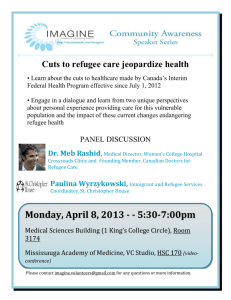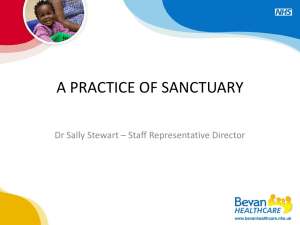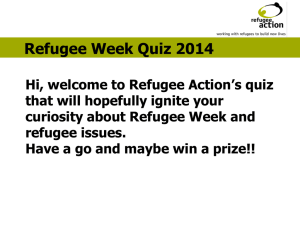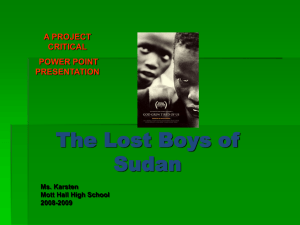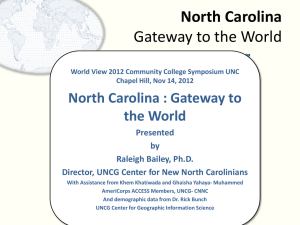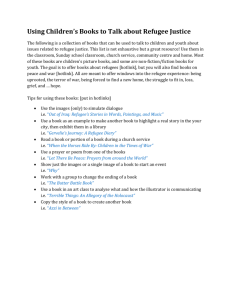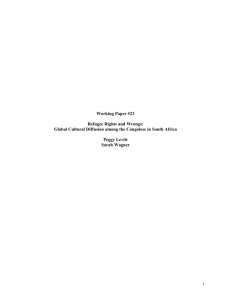LMERC refugee and migration stories
advertisement
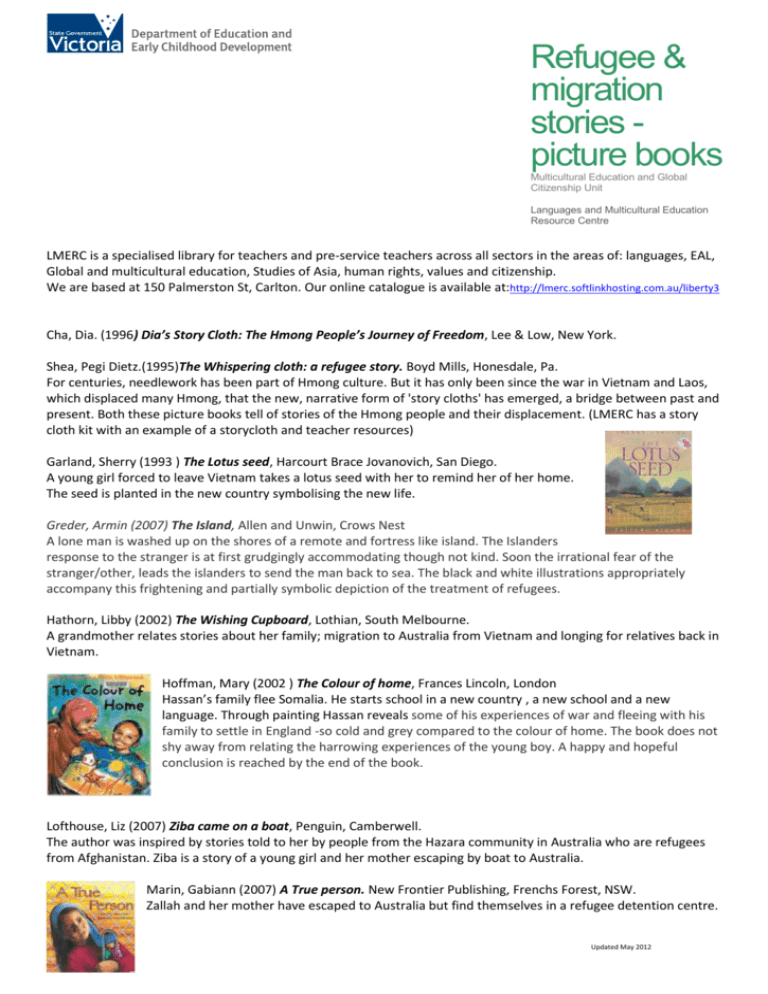
Refugee & migration stories picture books Multicultural Education and Global Citizenship Unit Languages and Multicultural Education Resource Centre LMERC is a specialised library for teachers and pre-service teachers across all sectors in the areas of: languages, EAL, Global and multicultural education, Studies of Asia, human rights, values and citizenship. We are based at 150 Palmerston St, Carlton. Our online catalogue is available at:http://lmerc.softlinkhosting.com.au/liberty3 Cha, Dia. (1996) Dia’s Story Cloth: The Hmong People’s Journey of Freedom, Lee & Low, New York. Shea, Pegi Dietz.(1995)The Whispering cloth: a refugee story. Boyd Mills, Honesdale, Pa. For centuries, needlework has been part of Hmong culture. But it has only been since the war in Vietnam and Laos, which displaced many Hmong, that the new, narrative form of 'story cloths' has emerged, a bridge between past and present. Both these picture books tell of stories of the Hmong people and their displacement. (LMERC has a story cloth kit with an example of a storycloth and teacher resources) Garland, Sherry (1993 ) The Lotus seed, Harcourt Brace Jovanovich, San Diego. A young girl forced to leave Vietnam takes a lotus seed with her to remind her of her home. The seed is planted in the new country symbolising the new life. Greder, Armin (2007) The Island, Allen and Unwin, Crows Nest A lone man is washed up on the shores of a remote and fortress like island. The Islanders response to the stranger is at first grudgingly accommodating though not kind. Soon the irrational fear of the stranger/other, leads the islanders to send the man back to sea. The black and white illustrations appropriately accompany this frightening and partially symbolic depiction of the treatment of refugees. Hathorn, Libby (2002) The Wishing Cupboard, Lothian, South Melbourne. A grandmother relates stories about her family; migration to Australia from Vietnam and longing for relatives back in Vietnam. Hoffman, Mary (2002 ) The Colour of home, Frances Lincoln, London Hassan’s family flee Somalia. He starts school in a new country , a new school and a new language. Through painting Hassan reveals some of his experiences of war and fleeing with his family to settle in England -so cold and grey compared to the colour of home. The book does not shy away from relating the harrowing experiences of the young boy. A happy and hopeful conclusion is reached by the end of the book. Lofthouse, Liz (2007) Ziba came on a boat, Penguin, Camberwell. The author was inspired by stories told to her by people from the Hazara community in Australia who are refugees from Afghanistan. Ziba is a story of a young girl and her mother escaping by boat to Australia. Marin, Gabiann (2007) A True person. New Frontier Publishing, Frenchs Forest, NSW. Zallah and her mother have escaped to Australia but find themselves in a refugee detention centre. Updated May 2012 Miller, David (2003) Refugees, Lothian, South Melbourne A refugee story told through lives of a pair of ducks who are forced from the home – a pond that will be drained for development. The ducks search and search for somewhere where they can be safe and settle. Illustrations in David Miller’s excellent paper cut style. This story may be a good choice for the younger years or where the use of metaphor may be a good starting point to understanding the experiences of others. Teacher’s notes with activities with assessment available http://www1.curriculum.edu.au/rel/values/book.php?catrelid=1495 Robinson, Anthony and Young, Annemarie (2009) Gervelle’s journey: a refugee diary. Frances Lincoln, London. When fighting broke out in the Republic of Congo, Gervelle and her family had to flee to safety. Also from Frances Lincoln: Meltem’s Journey, Hamzat’s journey and Mohammed’s journey-all in diary format with contextualisation. Tan, Shaun (2007) The Arrival. Lothian, Melbourne. This book, winner of the CBC Book of the Year award, looks at the difficulties of being a stranger in a new land. This wordless picture book is suited to all ages. Woodruff, Elvira (1999) The Memory coat. Scholastic, New York. [Russia-US] Grisha, an orphan, travels to the US with his extended family after Cossack raiders threaten the safety of his Russian shtetl . Excellent historical notes. Williams, Karen Lynn (2007) Four feet, two sandals, Eerdmans Books for Young Readers, Michigan Two girls living in a refugee camp in Kenya who have calloused and worn feet from not wearing shoes for a long time, each find one sandal of a pair. The girls resolve to take turns wearing the sandals. The story illustrates the hardships but also the resilience of refugees as they await acceptance to a new country. Story behind the story –from the author available at http://www.karenlynnwilliams.com/sandals.html & teacher’s notes http://www.karenlynnwilliams.com/files/sandals_guide.pdf Williams, Mary (2005) Brothers in hope : the story of the Lost Boys of Sudan, Lee & Low Books, New York. Thousands of orphaned boys fled Sudan’s civil war and forced military service by walking over 3,000 kilometres to Camp Kakuma in Kenya. This picture book is aimed at the primary level and therefore while speaking of the extreme difficulties faced by the boys is appropriately modified for the audience level. The boys’ strength and persistence through adversity is the overwhelming message of the book. Williams / Mohammed (2009) My name is Sangoel, Eerdmans Books for Young Readers, Grand Rapids, Michigan This story is told through the perspective of a young Sudanese Dinka boy who with his family leaves a refugee camp to be resettled in the United States. Sangoel’s sadness at the inability or unconcern of the people he meets including teachers and students to pronounce his name properly is in part is a metaphor for the need for identity and heritage to be respected and the difficulty all refugees face when settling into a new country. Sangoel finally, cleverly asserts his identity and teaches his classmates and teacher to pronounce his name. Teacher’s guide at : http://www.karenlynnwilliams.com/files/sandals_guide.pdf Many fiction and non-fiction titles, posters and websites are available for Early, Middle and Later years about refugees, asylum seekers and migration. Please contact LMERC for more information. LMERC library membership is available to Victorian teachers from school sectors, community language schools and staff and students from tertiary education faculties. To become a member of the LMERC library click on register, fill in online form and receive a library borrower’s card. Resources can be posted to schools in regional areas. LMERC is located at 150 Palmerston Street, Carlton 3053 (03) 9349 1418 and fax (03) 9349 1295 email:lmerc.library@edumail.vic.gov.au website:http://www.education.vic.gov.au/studentlearning/programs/lmerc/ catalogue: http://lmerc.softlinkhosting.com.au/liberty3 Wikispace: for electronic copies of this and other resource lists: http://www.globaleducationresources.wikispaces.com Updated May 2012


